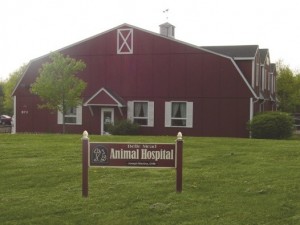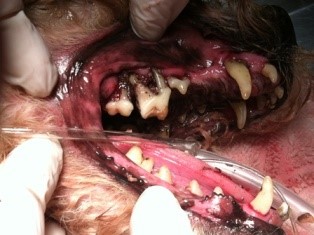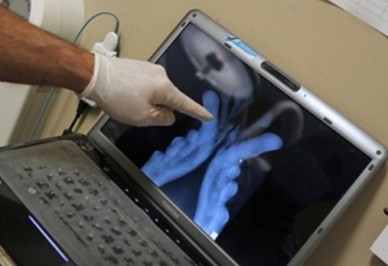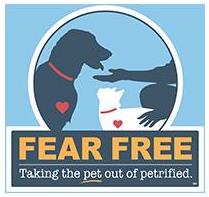
February 2015 – Dental disease is the most common disease of dogs and cats
February is National Pet Dental Health Month, and pet parents are advised to start early with both veterinary dental exams and home dental care. Why?
According to the American Veterinary Dental Society, 70% of cats and 80% of dogs suffer from some form of gum disease by the time they are 2-3 years old. Current research even suggests this is actually an underestimate in many pets. Dental disease does not only affect dogs and cats but also our exotic companion mammals. Rabbits and guinea pigs need regular exams, too. Pet parents may not realize that brushing their pet’s teeth should ideally start at 6 to 7 months of age.


Did you know you can help determine your pet’s oral health simply by lifting his/her lip?
Try this at home with your pet. Do you see any redness or swelling of the gums? Do you see any brown plaque or tartar? Does his/her breath smell bad sometimes or foul consistently? Redness, swelling and bad breath are all signs of periodontal disease due to bacterial infection. Periodontal disease encompasses gingivitis (inflammation of the gums) and periodontitis (loss of bone and soft tissue that helps hold teeth in place).
What you can’t see is definitely hurting your pet
Whatever disease you see above the gum line is also happening and progressing below the gum line. The real problem occurs when the bacteria in plaque and tartar spread below the gum line in pockets. As the stage of disease progresses over time from mild (stage 1, reversible) to the most severe (stage 4, irreversible) it’s because the bacteria and debris are deepening these pockets. These bacteria plus the toxins they produce break down bone and supporting tissue that hold the teeth in place. Because this isn’t visible, the effects of periodontal disease can go undetected while your pet’s health is slowly compromised.
Periodontal infection can lead to problems in and near the mouth such as tooth root abscesses, nasal infection, jaw fractures and yes, oral cancers. Infection that sits and attacks tissue for a long period of time can eventually transform to cancer.

Periodontal disease has also been linked to many systemic disease problems including kidney, liver and heart disease. Dental disease also has been known to actually cause and complicate diabetes in cats. There are many reasons how severe dental disease hurts pets both near and far from the mouth. One most documented reason is that the bacteria that has been allowed to grow and accumulate under the gums for years eventually spread directly through the bloodstream damaging organs and overwhelming a pets defenses and immune system.
Dental disease is not only painful but can actually shorten a pet’s life span by 3-5 years. Pets are silent sufferers. For this reason many pet owners do not initially notice at home or report any signs of dental pain to their veterinarians. However many pet owners, after professional veterinary dental care surprisingly and pleasantly report their pets are obviously more comfortable after dental care.
It’s again very important to note that dental disease is reversible with proper treatment in the earlier stages. Everyone including our pets should have the right to live a full and comfortable life with a clean, pain free mouth.
That’s why regular professional dental ultrasonic cleanings both above and more importantly below the pet’s gum line is essential to a pet’s health and well-being. Ultrasonic scaling and rinsing, especially down below within the gingival pocket between the gum and the root, is the most critical in keeping gums and dental bone healthy and clean. Annual or regular dental cleanings in pets actually reverses disease and ensures pets live longer and don’t ever suffer. Veterinarians and pet parents really need to advocate for their pets.
Dental x-rays are also particularly important for pets. Sixty percent of a pet’s tooth is below the surface. Twenty to thirty percent of teeth that look ok on the surface may have underlying problems that would be missed without x-rays. Again, all veterinarians and pet owners should be advocating for full mouth dental x-rays on their pets always.

Is anesthesia necessary?
It’s important to note that proper veterinary dental care requires general anesthesia. Properly performed, anesthesia is extremely safe. Even older pets with mild to moderate health problems can be safely anesthetized. The shorter the anesthetic time the safer the procedure. Therefore, it’s much safer to anesthetize pets annually or more regularly for prophylactic dental cleanings then it is to avoid dentals for years and be faced with long oral surgery cases that require longer more complicated anesthesias.
Learn more…
Talk to your family veterinarian about your pet’s proper dental care needs. He/she will be happy to assess your pet’s teeth. We can also show you how to properly brush your pet’s teeth and offer advice on dental toothpaste and treats. Discuss a dental exam schedule that is suitable for your pet’s breed, age and health condition. Remember that pets easily hide pain, especially cats, and advanced periodontal disease may go unnoticed until a critical stage. If you notice any symptoms such as food aversion or pawing at the mouth, an overdue dental exam is in order.
Recommended Reading:
Anesthesia – is it safe
Pet dental care – case study
Why animals need anesthesia for complete dental cleaning – Ask the Vet
Belle Mead Animal Hospital, Your Other Family Doctors
LIKE us on Facebook, Follow us on Twitter @BMAH121 and Join our Circle at Google+ for news and pet wellness tips.










